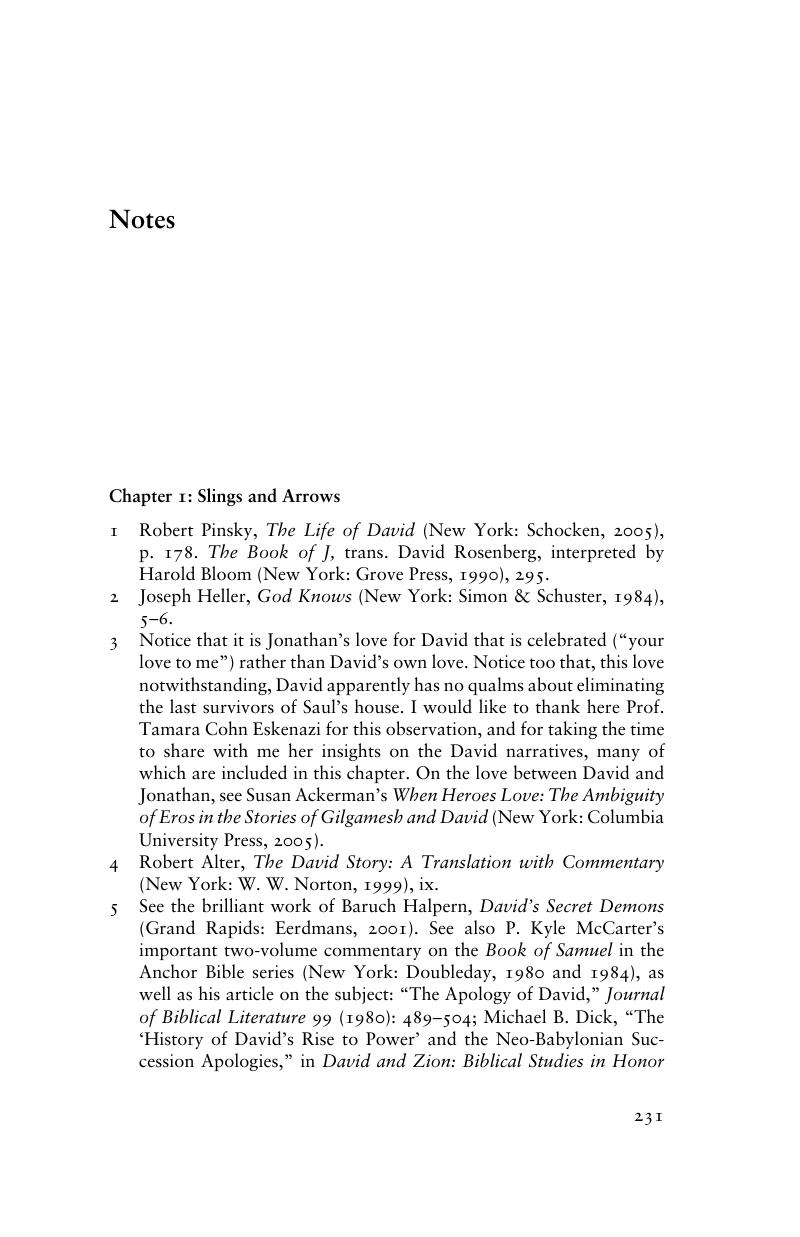Book contents
- Frontmatter
- Dedication
- Contents
- Preface
- 1 Slings and Arrows
- 2 Flesh and Stone
- 3 King of Judah
- 4 Tales of Loyalty and Betrayal
- 5 The Bones of Saul
- 6 Uriah the Hittite
- 7 Ittai the Gittite
- 8 David in Exile
- 9 Territorial Transitions
- 10 Chronicles
- 11 Caleb and the Conquest
- 12 Caleb the Warrior
- 13 Caleb the Judahite
- 14 War-Torn David
- Notes
- Index of Modern Authors
- Index of Biblical Passages and Related Texts
- Index of Historical Figures
- References
Notes
Published online by Cambridge University Press: 05 June 2014
- Frontmatter
- Dedication
- Contents
- Preface
- 1 Slings and Arrows
- 2 Flesh and Stone
- 3 King of Judah
- 4 Tales of Loyalty and Betrayal
- 5 The Bones of Saul
- 6 Uriah the Hittite
- 7 Ittai the Gittite
- 8 David in Exile
- 9 Territorial Transitions
- 10 Chronicles
- 11 Caleb and the Conquest
- 12 Caleb the Warrior
- 13 Caleb the Judahite
- 14 War-Torn David
- Notes
- Index of Modern Authors
- Index of Biblical Passages and Related Texts
- Index of Historical Figures
- References
Summary

- Type
- Chapter
- Information
- David, King of Israel, and Caleb in Biblical Memory , pp. 231 - 260Publisher: Cambridge University PressPrint publication year: 2014



